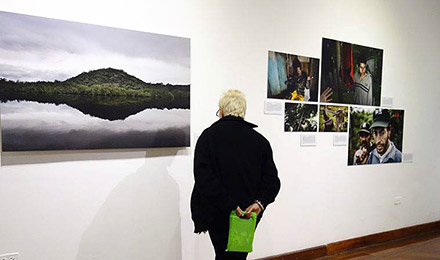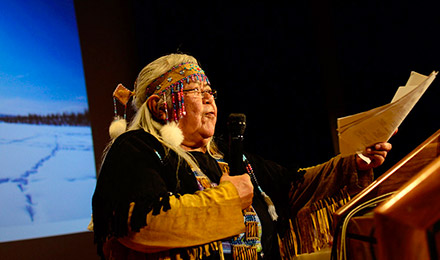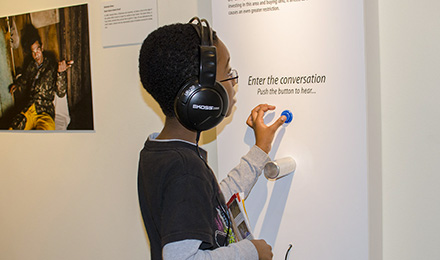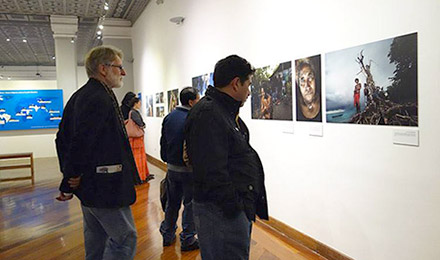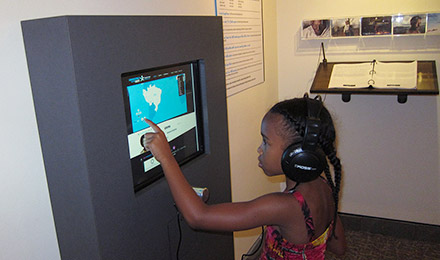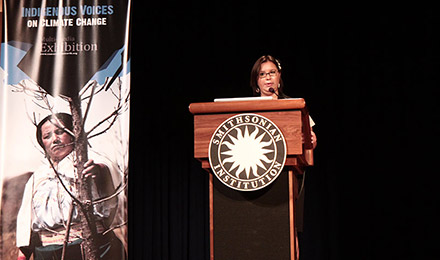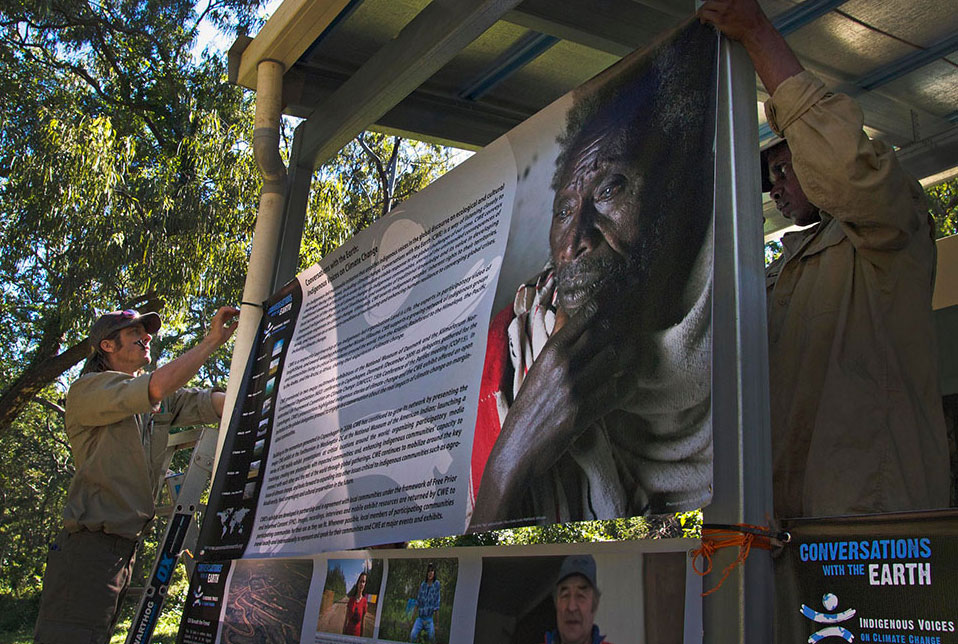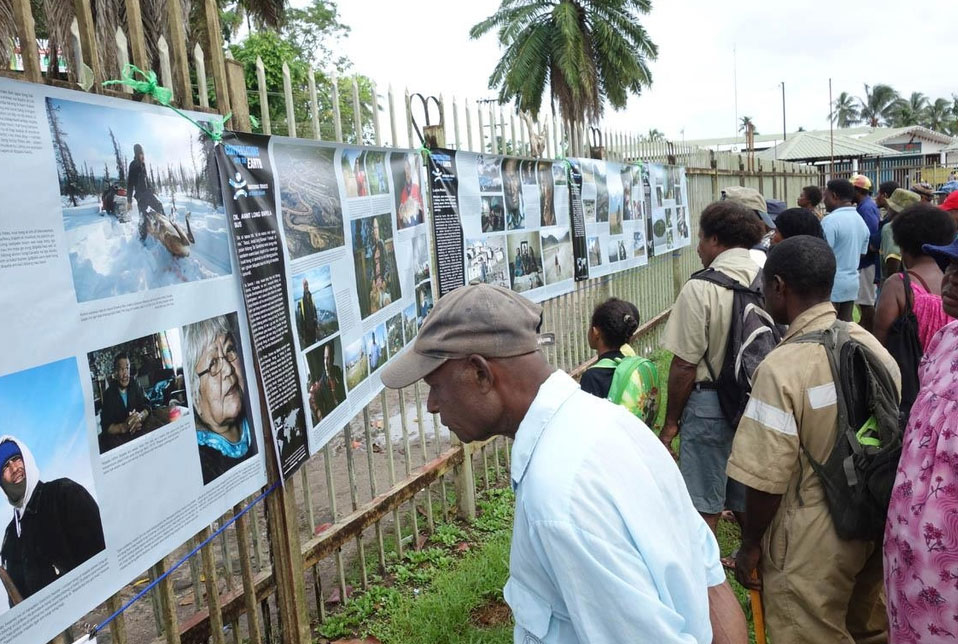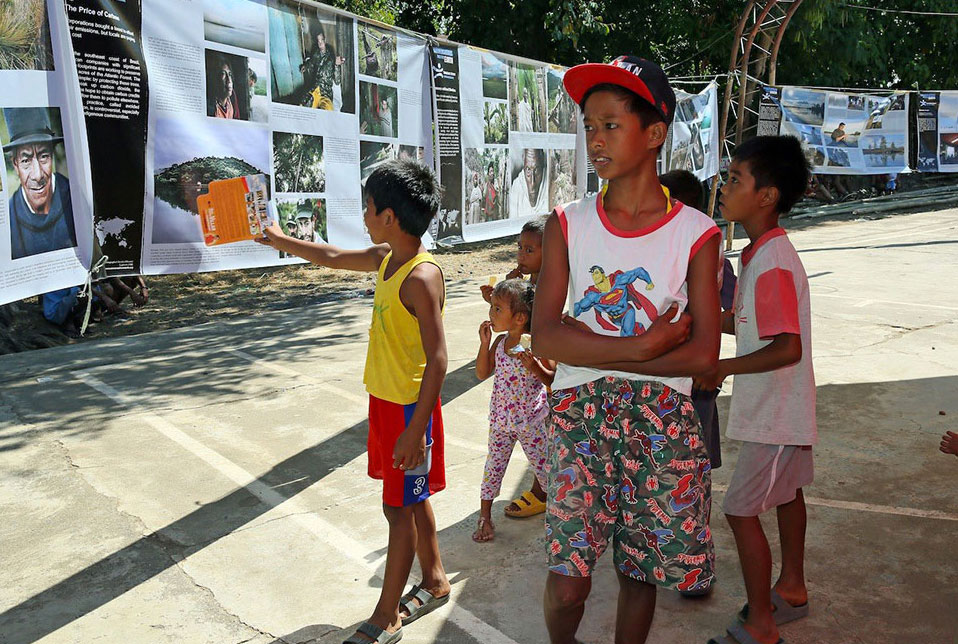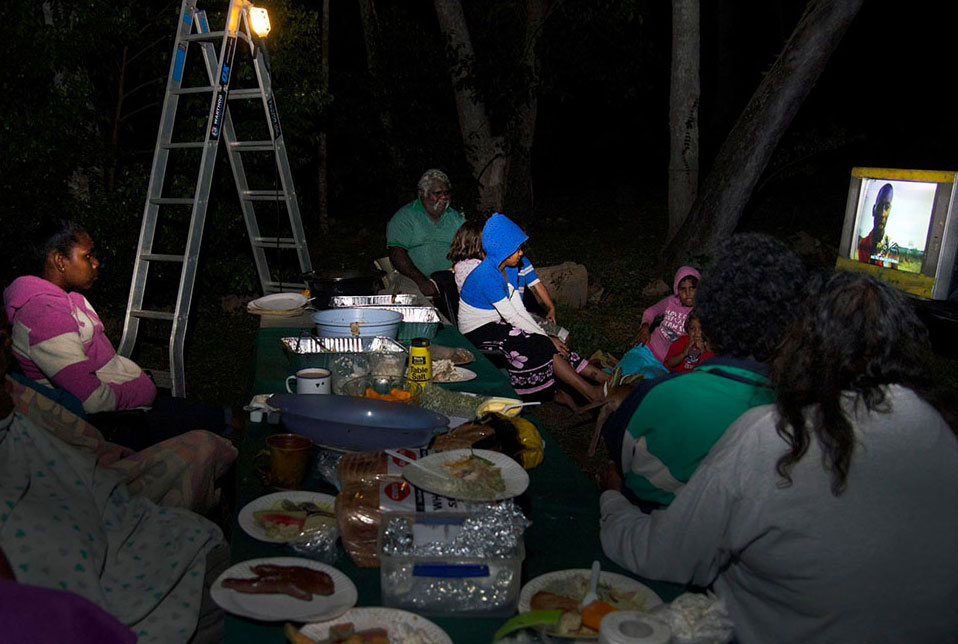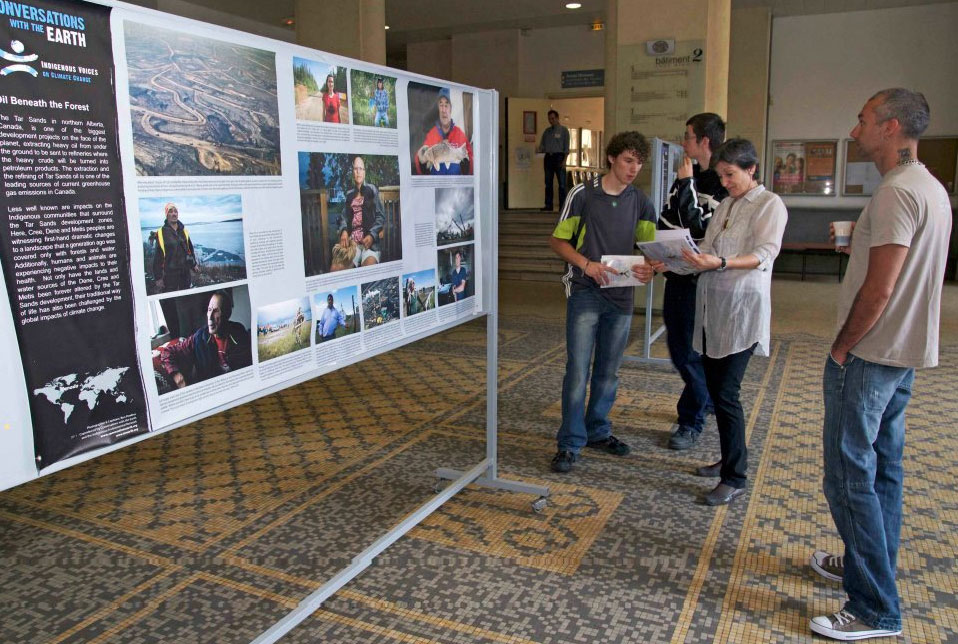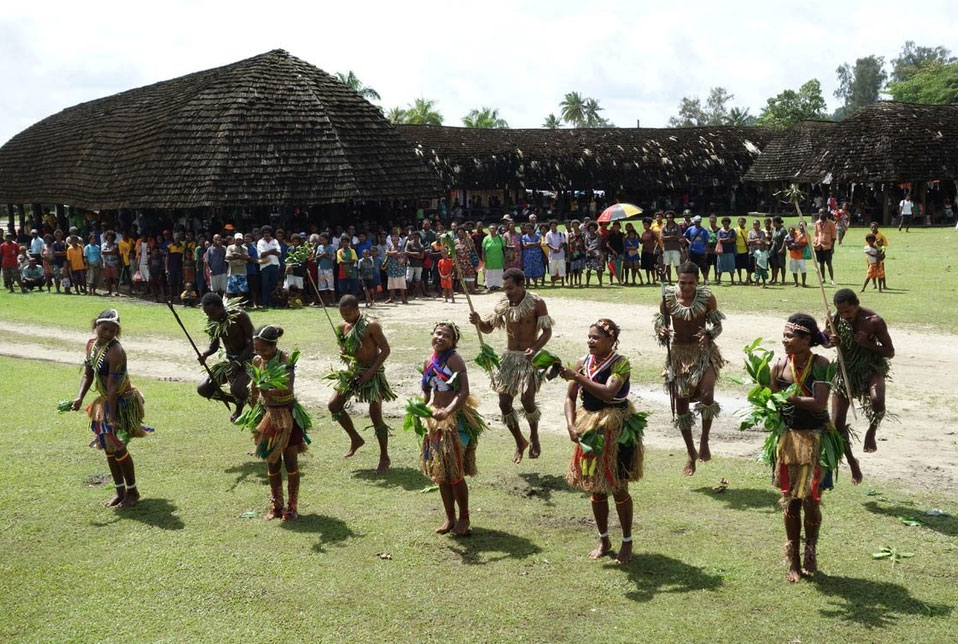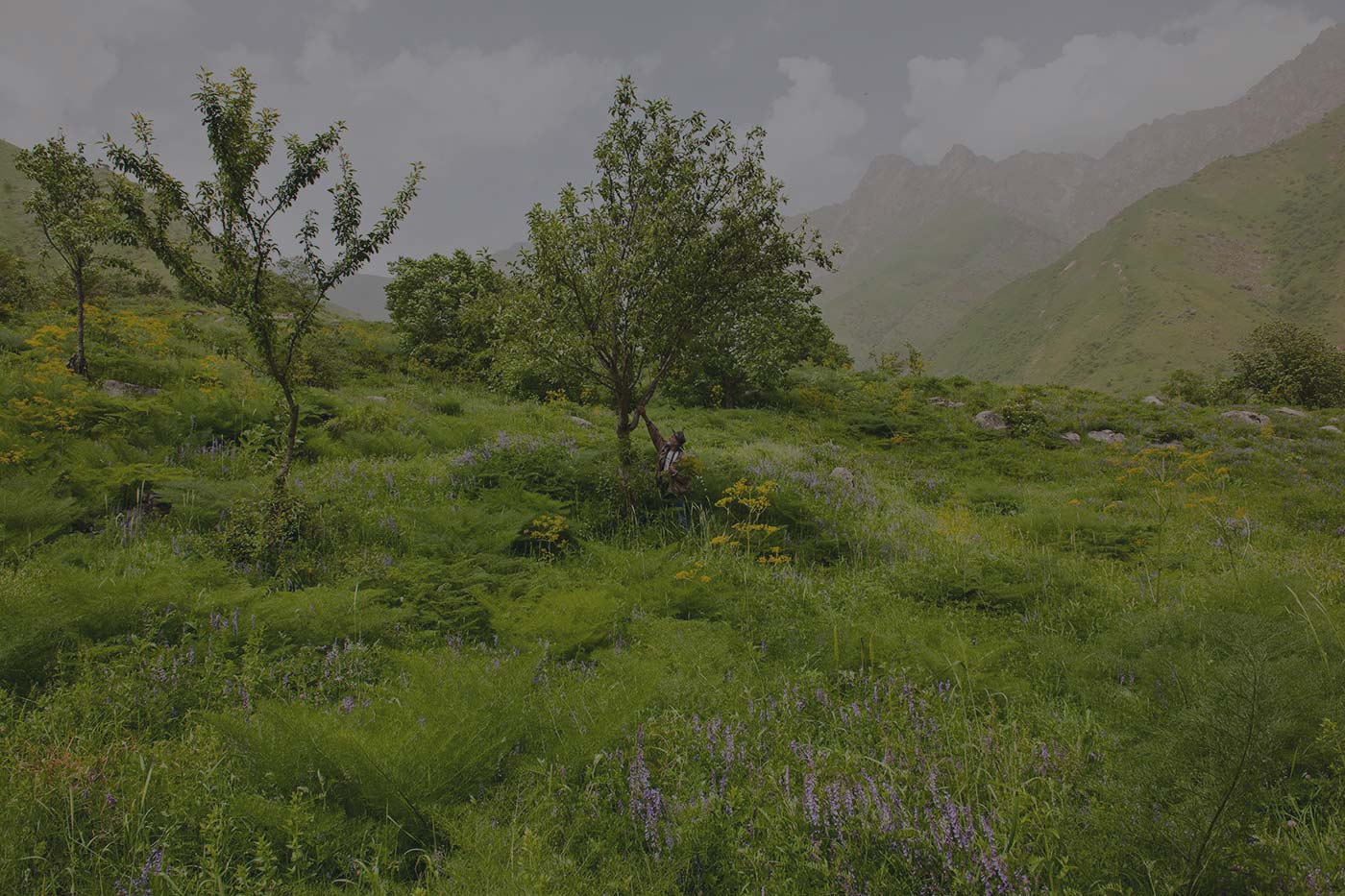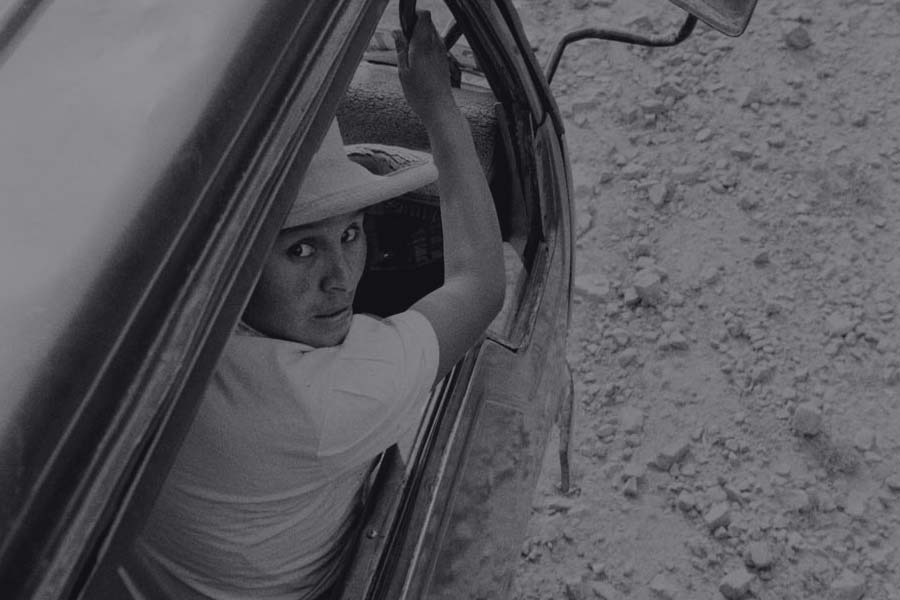
Indigenous voices on climate change
“Without water, there is no life”Zanskari schoolteacher Tsering Motup
Project summary
Conversations with the Earth (CWE) is a way of listening closely to traditional custodians of the world’s biocultural diversity in order to formulate viable global responses to environmental challenges.
CWE’s opening conversation brings Indigenous Voices on Climate Change to convey local experiences of climate change. Grounded in respectful long-term partnership between indigenous-led organizations and award-winning experts in participatory video, journalism, photography, and audio, CWE conveys local accounts of the impacts of climate change on indigenous communities, stories of the unintended consequences of imposed mitigation e orts on local livelihoods, and examples of traditional knowledge and its value in developing appropriate responses to climate change.
CWE asserts indigenous peoples’ inherent rights to their territories, lands, and resources as a necessary condition of maintaining and enhancing resilience of local social-ecological systems to multiple converging global crises, including climate change.
VISIT WEBSITE“We don’t have much,Charley Swaney, Arctic Village, USA
but what we have is out there.”
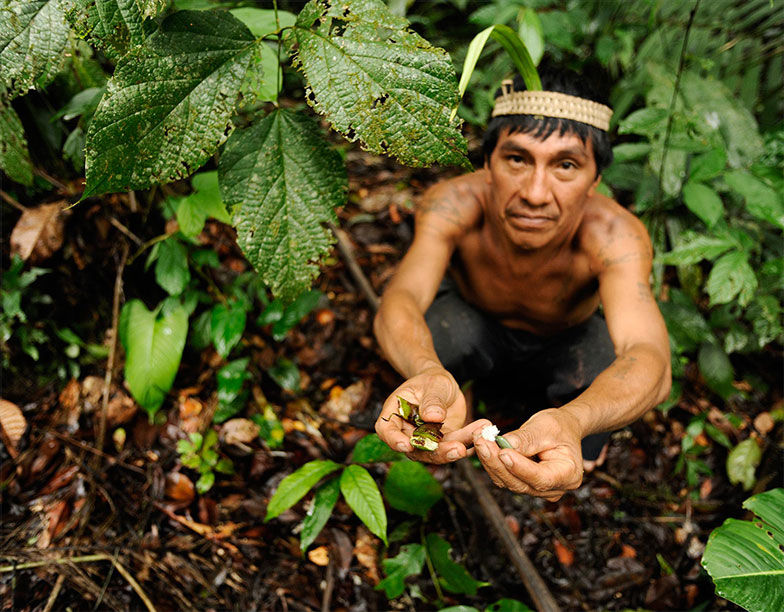
Core beliefs
Traditional and Indigenous communities depend on a healthy relationship with the land and therefore possess a wealth of knowledge, wisdom, and practical experience in adapting to long-term changes in their environment.
Still, indigenous communities are extremely vulnerable to the current unprecedented rate of global climate change, with its large-scale external disruptions to the web of life. This threat to traditional communities is a threat to the entire human family. Proposed or implemented responses to the common challenges of climate change will fall short, unless they are grounded in a recognition of the territorial, land, and resource rights of Indigenous peoples.
The traditional ecological knowledge, wisdom and practices of Indigenous peoples comprise the global biocultural heritage that must inform and guide climate change adaptation and mitigation strategies at global, regional and local scales.
“When I was a childIshay Paldan, Kumik, Zanskar
there were no problems with water”
“Before the glacier
was much bigger“
A timing issue
Compared to the dominant industrialized societies, Indigenous Peoples have contributed least to climate change. Still, they suffer the brunt of the immediate and direct effects of escalating climate disruption.
Despite the September 2007 adoption by the UN General Assembly of the UN Declaration on the Rights of Indigenous Peoples (UNDRIP), Indigenous Peoples continue to be excluded from the UN climate negotiations – the embodiment of climate injustice. At this critical time of global decision-making, Indigenous voices have important knowledge and wisdom to contribute to the global discourse on climate change that guides global choices in shaping our collective future.
From Manus Islanders in Papua New Guinea working together to save their oceanside homes, to Maasai villagers in Kenya responding to a cattle-killing drought in the open grasslands, Conversations with the Earth works to enable local Indigenous communities to create and share first-hand accounts of their experience of climate change.
.
.
.
.
.
.
.
“Love is theMusavar Minakov
source of life“
Founding partners
The Conversations with the Earth project was founded in 2009 by international indigenous-led advocacy and education organization for the rights of Indigenous Peoples, Land Is Life; renowned experts in participatory video, InsightShare; and award-winning photographer and expert in sustaining oral traditions, Nicolas Villaume, founder of the association Conversations du Monde, multimedia exhibitions designer.
CWE has also benefited from contributions from a range of writers and editorial sources. Today, Conversations with the Earth is a growing network of indigenous groups and communities living in critical ecosystems around the world, from the Atlantic Rainforest to Central Asia, from the Philippines to the Andes, from the Arctic to Ethiopia.
As part of CWE, the indigenous communities share their local stories of climate change impacts and adaptation strategies with each other and the global community. Around the world, CWE supports and networks communities developing sustainable autonomous indigenous media based on principles of Free, Prior and Informed Consent (FPIC), local control and support for local indigenous media capacity.
“I make a call to all the people, to all the world, that we shouldn’t destroy, we should take care”Josefina Lema, Mojandita, Ecuador
.
.
.
.
.
.
.
Venues
CWE premiered as a major multimedia exhibition at the watershed 15th Conference of the Parties (COP 15) of the United Nation Framework Convention on Climate Change (UNFCCC) meeting in Copenhagen, Denmark (December 2009).
Since then, CWE has continued to bring Indigenous voices on climate change to key meetings around the world through CWE’s mobile exhibits in Spanish and English, participatory video screenings at film festivals, and in-person presentations of delegates from CWE partner communities.
Venues have included the World People’s Conference on Climate Change and the Rights of Mother Earth in Cochabamba, Bolivia; the 10th International Festival of Film and Video of Indigenous Peoples in Quito, Ecuador; the US Social Forum in Detroit, Michigan; the UNFCCC COP 16 meeting on climate change in Cancun, Mexico; and National Geographic’s All Roads Film Festival in Washington, DC.
Most recently, CWE’s major exhibit was on display at the Smithsonian’s National Museum of American Indian in Washington, DC from 22 July 2011 – 2 January 2012.
“We are a harbinger of what is to come, what the rest of the world can expect.”Patricia Cochran, Indigenous Peoples Global Summit on Climate Change
A MULTI ACCESS
MULTIMEDIA EXPERIENCE
Conversation with the Earth artfully blends local knowledge of land and seascapes, media expertise, high-tech tools, and participatory action, to convey intimate stories of climate change. Through excellent reporting, powerful portraits, interviews, and participatory media, the visitor is immersed in the sounds and the feel of a site and its people. In the process the visitor experiences not only a story about climate change but the means by which the communities tell the story, and indeed the means by which indigenous communities everywhere share knowledge to address problems: a conversation.
Photography / and Talking portraits
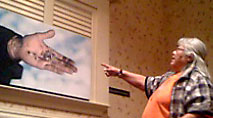 Over 120 photographs to recreate the experience of being live and in the field, CWE offers life-sized color portraits, and remote landscapes views.Select photographs allow the narrator to actually talk directly to the visitor via hidden MP3 sound boxes or other devices. The voice, usually field recordings in the original native language, is added either through a loudspeaker near the portrait or a stereo headphones by its side.
Over 120 photographs to recreate the experience of being live and in the field, CWE offers life-sized color portraits, and remote landscapes views.Select photographs allow the narrator to actually talk directly to the visitor via hidden MP3 sound boxes or other devices. The voice, usually field recordings in the original native language, is added either through a loudspeaker near the portrait or a stereo headphones by its side.
Participatory Video Booth
 Using video projectors or personal video stations, CWE screens over 30 films made by indigenous communities about their own experience with climate change, using the participatory video methodology. Cameras in their hands, community members interview their friends and neighbors, men and women, parents and children, youth and elders, to record how climate-change affects their daily lives. The result is a direct testimony, a skillful and custom-crafted narrative, and community-owned media. The 10-minute clips come from the growing Indigenous Media Hubs network that CWE is promoting around the world.
Using video projectors or personal video stations, CWE screens over 30 films made by indigenous communities about their own experience with climate change, using the participatory video methodology. Cameras in their hands, community members interview their friends and neighbors, men and women, parents and children, youth and elders, to record how climate-change affects their daily lives. The result is a direct testimony, a skillful and custom-crafted narrative, and community-owned media. The 10-minute clips come from the growing Indigenous Media Hubs network that CWE is promoting around the world.
Text panels and published work
 At the visual heart of the exhibit is a series of photo essays about local communities and the issues that affect them. Each photograph here offers an informative caption and/or a quote from field recordings, easing the visitor into a deeper understanding of each story displayed. These will be supplemented by informative text panels introducing each of the photo essays separately. In some cases, panels display fuller text or a published article on the story concerned.
At the visual heart of the exhibit is a series of photo essays about local communities and the issues that affect them. Each photograph here offers an informative caption and/or a quote from field recordings, easing the visitor into a deeper understanding of each story displayed. These will be supplemented by informative text panels introducing each of the photo essays separately. In some cases, panels display fuller text or a published article on the story concerned.
In-Person Testimonies
 One of the most powerful ways to experience the exhibit is when visitors can interact directly from local indigenous community members who appears in the photostories or have created the videos. Whenever it is possible, CWE facilitates the travel of local participants to CWE exhibits for special events and conferences where they can dialogue with the visitors.
One of the most powerful ways to experience the exhibit is when visitors can interact directly from local indigenous community members who appears in the photostories or have created the videos. Whenever it is possible, CWE facilitates the travel of local participants to CWE exhibits for special events and conferences where they can dialogue with the visitors.
Contemporary interpretations by traditional artisans
 CWE exhibit include contemporary indigenous artisan’s reflection on the meaning of climate change through original creations of traditional crafts.
CWE exhibit include contemporary indigenous artisan’s reflection on the meaning of climate change through original creations of traditional crafts.
Mobile exhibits
 The exhibition Conversations with the Earth: Indigenous Voices on Climate Change, has been on tour internationally in two formats: “Full-scale” – mostly designed for longer term museum display; and “Mobile” – a portable all-weather installation, easy to ship and install, ready to be displayed in communities, in schools, at conferences and special events, anywhere from a few hours to a few weeks.
The exhibition Conversations with the Earth: Indigenous Voices on Climate Change, has been on tour internationally in two formats: “Full-scale” – mostly designed for longer term museum display; and “Mobile” – a portable all-weather installation, easy to ship and install, ready to be displayed in communities, in schools, at conferences and special events, anywhere from a few hours to a few weeks.
Exhibitions to date
Bringing together audio, participatory video, photo essays, informative captions, published articles, and interactive touchscreens with web access, Conversations With the Earth (CWE) exhibits create a powerful multi-sensory narrative portraits to convey intimate stories of indigenous peoples’ experience of climate change.
The CWE Multimedia exhibitions are available in 7 languages, and in various formats: from museum-quality exhibits “full scale version”, to “mobile exhibits version”, smaller and easy to distribute worldwide.
Previous
- Ecuador national CWE tour 2013, in partnership with the Alliance Francaise cultural network. (Cities of Quito, Loja, Cuenca, Guyaquil).
- CCM, Centro Cultural Metropolitano, Quito, Ecuador, June 2013
- MUSEO METROPOLITANO, Lima, April 2013
- ALLIANZA FRANCESA in Peru – Arequipa, Chiclayo, Trujillo – 2013
- UNITED NATIONS Headquarters, New York, USA, May 2012
- SMITHSONIAN, National Museum of the American Indians, Washington, July 2011
- CWE Conversations with the Earth Festival, Oxford , England / March 2011
- UNITED STATES SOCIAL FORUM, New York, USA / June 2010
- ICCC and the right of Mother Earth, Cochabamba, Bolivia / April 2010
- ISEC International Society for Ethnobiology Congress, Tofino, Canada / May 2010
- ICTD 2010 (UNESCO), London, England / Dec 2010
- COP 16, Cancun, Mexico / Nov 2010
- NATIONAL MUSEUM OF DENMARK, Copenhaguen, Denmark / Dec-Jan 2009
- KLIMAFORUM, Copenhaguen, Denmark / Dec 2009
- BIONEERS, California, USA / Oct 2009
Community mobile exhibits
- Thunder Bay, Canada, 2013
- Manus, Papua New Guinea, 2013
- Philippines, 2013
- Mojandita, Ecuador, 2012
- Kuku Nyungkal Bubu, Australia, 2012
- Cairns, Australia, 2012
- Montpellier, France, 2012
- Selkie, Finland, 2012
- Yaqui territory, Mexico, 2012
- Comcaac territory, Mexico, 2012
- Mexico city, 2012
- Bertoa, Cameroon, 2012
- Oltepesi, Kenya, 2012
- Arctic Village, Alaska, USA, 2012
“We have knowledge that can contribute to finding solutions to the crisis of climate change. But if you’re not prepared to listen, how can we communicate this to you?”Marcos Terena, Xané leader, Brazil
“Love is theMusavar Minakov
source of life“
Education activities
CWE has developed series of educational resources about climate change and indigenous peoples, based on the stories presented in the exhibitions.
These materials and education curriculum have been designed to serve as an education guide and participatory learning resource within Conversations with the Earth exhibition. Content included in the education materials, facilitates visitors’ understanding of the different topics highlighted in the exhibition, and enhances the school visit experience. Through games and interactive methodology, it also intends to awake a more critical and reflective learning about climate change and indigenous peoples, from a more personal perspective. Throughout these activities students were able to:
- learn about climate change and and its impacts on the lifestyle of different indigenous communities around the world, based on real stories and testimonies;
- become aware of the vulnerabilities of indigenous peoples to changes in their natural environment caused by modern pressures.
- Work as a team.
The education materials are targeted to both elementary and high school levels, with specific activities for each section of the CWE Exhibit. DVDs and Mobile exhibition panels are also available for teachers who wish to print and display content in their own school. Please contact us directly if you are interested.
“If you don’t love the nature, the nature will not reciprocate to you”Mirzosho Akkobirov
.
.
.
.
.
.
Downloads and ressources
The CWE exhibits and web-based resources are an open invitation to the world to engage in a conversation about the real impacts of climate change on Indigenous communities, and to grow a global network of sharing, reflection, action and support.
To carry forward the momentum generated over the last two years, CWE has been organizing trainings on Indigenous rights, climate change policy, and participatory media; creating new photostories with Indigenous communities; and, enhancing local capacity to connect and share with each other and the rest of the world through holding retreats, participating in global gatherings and using social media. CWE continues to focus on climate change, but is also exploring issues related to local food systems, food sovereignty and sacred sites – fundamental elements of Indigenous wellbeing.
Download
(Right click on the following links and choose “Save file”)
.
.
.
.
.
.
.
PROJECT TEAM
Core team CDM
Nicolas Villaume, Photographer and project co-leader ; Michael Van Houten, webdesigner ; Veronica Tabja del Solar, Education material ; Claire Greensfelder, Coordinator CWE, Inochi ; Thomas Vallegeas, Photo editing.
Partners & contributors
Insightshare’s dedicated team – NGO Land is Life’s dedicated team – Tim Johnson, Kerry Boyd, Karen Fort, Chris Arnold, and all the many dedicated staff at the Smithsonian’s National Museum of the American Indian. Abera Ambaye Dito – Andres Cediel – Amazon Watch/ Andrew Miller – Angelica Canchumani – APIYN (Asia Pacific Indigenous Youth Network) – Association Okani – Asociacion Cuyay Wasi – Asociacion Qolla Aymara – APU (Asociacion Pacha Uyway) – Ben Powless – Bing Gong – Brent Blackwelder – Cassandra Smithies – Brian Keane – Casey Box – Catherine Sparks – Center for International Environmental Law – Charley Swaney – Chris Atkins – Cody Harjo – Darout Guma Gugie – Debbie Barker – Diaguidili De Leon Merry – Diana Cohn – Donna House – Eleanore Despina – Erin Freeland Ballantyne – Evelyn Arce and International Funders of Indigenous Peoples – Folabi Olagbaju – FPCI (Fundación Para La Promoción Del Conocimiento Indígena) – Front Line World – Gleb Raygorodetsky – Glenn and Elizabeth Allen – Gregg Mc Vicar – Haydee Banasen – Hipolito Peralta Ccama – Indian Law Resource Center/Armstrong Wiggins and Philomena Kebec – ILCA (Initiative for Living Community Action) – INOCHI/Sensei Kazuaki Tanahashi – Indian Law Resource Center – Irma Luz Poma Canchumani – Jamut Boo’o A.C. – Janeen Antoine – Janet Redmond – Jeannette Armstrong – Jeanette Kakfui – Jeffrey Campbell – Jemimah Mashipei – Jennifer Awingan – Jamut Boo’o A.C. – Jesús Smith Richards Jr. – Jimmy John – John Pondrein – Jonathan Mingle – Jose Proaño – Josefina Lema – Julian Brave Noise Cat – Keidy Magtoto Transfiguracion – Kristin Hite – Karen and Sonya Swift – Katrina Wilde – Kaylena Bray – Keidy Magtoto Transfiguracion – Ken Wilson – Kitikmeot Heritage Society – Konchok Sherab – Marcos Terena – Mario Bravo – Minette Mangahas – MPIDO (Mainyoito Pastoralists Integrated Development Organization) – Laird Townsend (for Gwich’in photostory original text) – Leonardo Wera Tupa – Lulu A. Gimenez – Maja Tillmann – Marceline Eboko Edwige – Mark Dowie – Mark Sommer – Maria Anabela Carlón Flores – Maria Rosio Achahui Quenti – Martha Perreira – Maruja Salas – Melissa Nelson – Messe Venant – Moses Mopel Kisosion – Mark Schapiro – Messe Venant – Moses Mopel Kisosion – Nathalie Lowenthal-Savy – Ngenge Sasa – Noel Olinga – Nuno Nunes – Pamela Anne Hakongak Gross – Peter Riggs – Raymundo Aguirre Mamani – Perkka asociacion – Robin Pagliuco – Rodrigo Otero Heraud – Ruth Oku-Ampofo – The Sallqavideaistas from Peru: Irma Poma Canchumani, Rosio Achahui, Sabino Cutipa, Raymundo Aguirre, Pelayo Carrilo, Primitivo Jaulis, Balvino Zevallos – Stanley Selian Konini – Sarah James – Savory Thymes/Ali Ghiorse – Shagre Shano Shale – Stanley Selian Konini – Tadesse Wolde – Thea Riofrancos – Timmi Tillmann – Toby McLeod – Tom Beil – Tom Goldtooth and the Indigenous Environmental Network – Tsewang Rigzin – Victoria Tauli-Corpuz and Tebtebba Foundation – Yumi Sera – Zenobia Barlow.
The Conversations with the Earth project has been funded by The Christensen Fund ; with the additional support by The Lia Fund, Kalliopeia Foundation, and the Ford Foundation.
.
.
.
.
.
.
.


